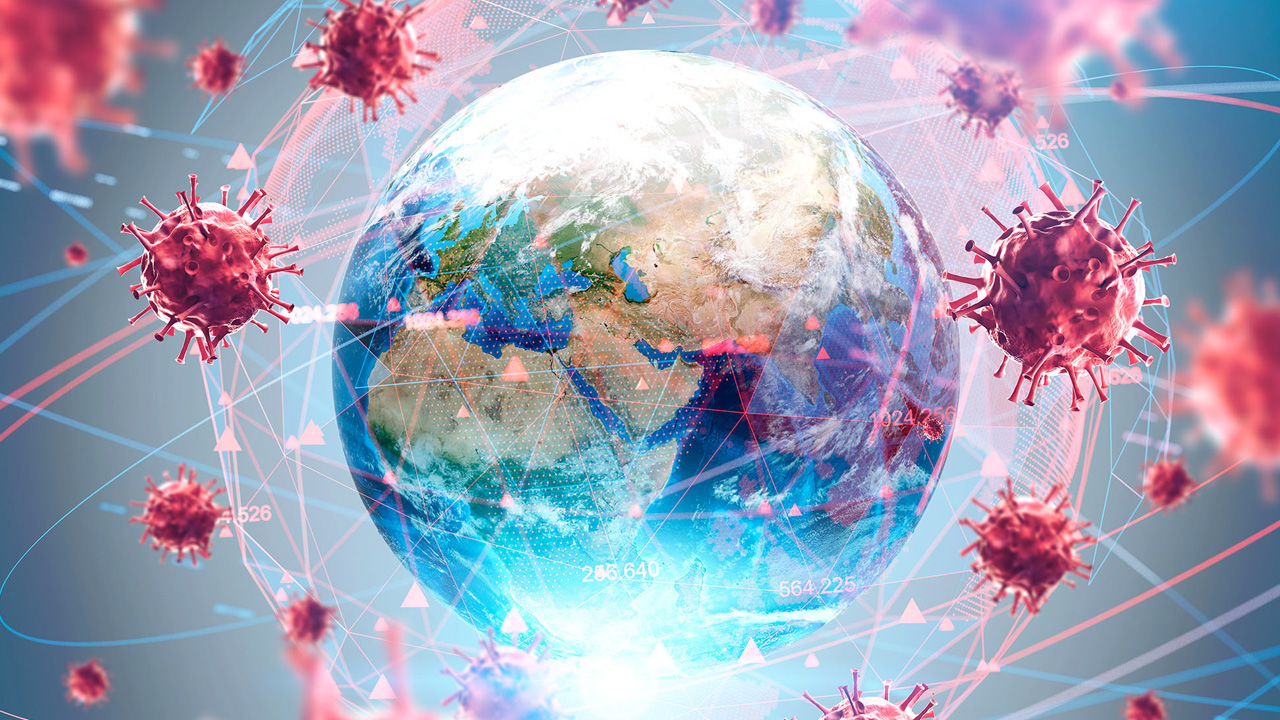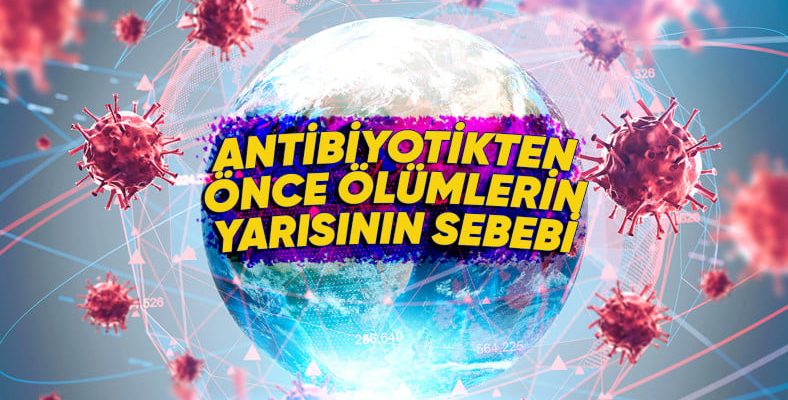Infections, which are an integral part of our lives, are often mild, such as a simple cold or flu, but from time to time they can lead to serious health problems and even death. Why are infections, which have existed throughout human history and left a deep impact on societies, still among the 10 causes of death in the world, despite the advancement of medicine?
Although these microscopic enemies are invisible, they can greatly affect our daily lives. Although our immune system immediately steps in and starts a war to neutralize them when they enter our body, sometimes, especially when our defense system is weakened. infections causes serious problems.
For the long-term struggle “What is infection?” Knowing the answer to the question is directly related to understanding the most common types and taking precautions against them. Then “Neither with you nor without you.” Since we are so sincere, let’s take a closer look at the infections we mentioned.
We got the infection in full detail:
“What is infection?” Let’s get to know them first with a general definition like:
Infections that begin with the entry and proliferation of microorganisms into the body bacteria, viruses, fungi and parasites is available. Each of them has different ways of entering the body and proliferation strategies.
While viruses multiply using our cells as a “factory”, bacteria usually reside in body fluids. reproduces freely. Our body’s way of dealing with each one is also different; In some cases, we produce antibodies, and in others, we intervene directly through our special cells. Of course, antibiotic treatment is necessary for some of them to disappear.
How do infections enter our body?
We take the infections that are around us all the time into our body in various ways. Types of infection spread can be listed as follows:
- By air: through droplets released into the air by coughing and sneezing
- Direct contact: Skin-to-skin contact or touching an infected surface
- Contaminated food and water: Consuming infected food or water
- Through blood: Through transfusion of infected blood or contaminated needles
- Via vectors: with disease-carrying organisms, such as mosquito bites
What are the most common types of infections in the world?
meningococcus
sepsis
Septic shock, which occurs when bacteria enter the bloodstream and grow rapidly, affects one in five people in the world. Sepsis, which causes organ failure and death if left untreated, sometimes the type of bacteria that causes the infection It cannot be identified and this makes the treatment process difficult.
lung inflammation
Symptoms such as difficulty breathing, fever, chills, phlegm and cough lung inflammationis among the leading causes of death in children under five in the world. This type of infection caused by bacteria and viruses pneumoniaAlthough it has become a condition that can be prevented by vaccination, it affects the health of many people.
Urinary tract infection
It occurs when bacteria enter the urinary system and multiply. urinary tract infectionsIt is one of the most common types of infections in the world. This infection, which manifests itself with a burning sensation when urinating, blood in the urine and a sharp needle, can usually be treated with antibiotics. However, in some cases, if the infection turns into sepsis, it can cause death.
Meningitis
Meningitis, caused by a virus or fungus, surrounds the brain and spinal cord, causing serious damage. Meningococcus While this type is the most severe, it becomes deadly in a short time.
Although meningitis is included in the routine vaccination schedule in many countries in order to prevent this disease, unfortunately it is not diagnosed in our country. paid vaccinations within. You can find more detailed information on the subject here.
wound infections
Whether it is surgery or a minor injury, bacteria entering through an open wound settle in the body and bring infection with it. chronic wounds 40 million people are affected worldwide every year. Especially in type 2 diabetic patients, wound infections seen frequently.
Tuberculosis
Tuberculosis caused by mycobacterium tuberculosis, which infects the lungs types of lower respiratory tract infections someone. Resistance to drugs puts this infection on the path to becoming a killer strain. On the other hand, the tuberculosis vaccine is among the most common vaccines in the world.
Diarrhea
The second cause of death in children under the age of 5 is diarrhea, and due to diarrhea every year More than half a million children die. Although there were deaths due to fluid loss accompanying diarrhea for a while, sepsis has also been added to these rates recently. E. Coli infection is shown as one of the most common causes of diarrhea.
Infections rank 4th in the list of causes of death worldwide.

According to the World Health Organization (WHO) 2019 report infectious diseases, one of the leading causes of death worldwide. worldwide Cause of 7.7 million deathshas been linked to infections caused by 33 types of bacteria. This is equal to 1 in 8 of all global deaths.
lower respiratory tract infections, became the world’s deadliest infectious disease and ranked fourth. In 2000, there was a decrease of 460 thousand in the number of deaths due to this infection. In 2019 reports, the number of deaths due to lower respiratory tract infection is shown as 2.6 million.
While HIV/AIDS was among the top 10 causes of death in 2000, this type of infection is not included in the 2019 data. HIV and AIDS death rates It decreases by 51 percent and falls to 19th place in 2019.
Deaths caused by infections also vary according to income groups.
Mortality rates of people living in low-income countries number of infectious diseases more. Malaria, tuberculosis and HIV/AIDS are in the top 10. There is a decrease in all three compared to 2000. The biggest decrease is again HIV/AIDS, with a rate of 59 percent.
Among deaths in high-income countries, lower respiratory tract infections It ranks 6th.
How can we protect ourselves from infections?
There are many ways to protect yourself from infections. It is useful to pay attention to some points in our lifestyle, avoid infections as much as possible, and use some of the prevention methods brought by medicine. COVID-19, flu, Vaccines are available to protect against some infections such as tuberculosis and meningitis. Of course, even after vaccination catch an infection It is possible, but symptoms can often be less severe.
Safe food handling is infection prevention methods between. Washing all fruits and vegetables thoroughly, avoiding uncooked or undercooked seafood, and washing food preparation surfaces with soap and water are just a few things that can be done.
Making changes in our daily habits is also effective in preventing diseases. In addition to hygiene rules such as washing hands before preparing food and after going to the toilet, covering mouth and nose when sneezing or coughing, avoiding contact with people with contagious diseases, not drinking dirty water, not having any kind of sex. use condom It is among the infection prevention methods.
Although better methods are being developed to combat these diseases thanks to advances in science, expanding preventive health services and vaccinations, raising hygiene standards and the importance of early diagnosis and treatment, important points to be made in controlling infectious diseases.
Our other content covered in the health branch:
RELATED NEWS
How were surgeries performed when there was no such thing as anesthesia? (When you read it, you will say “It’s a good thing we didn’t live in those times”)
RELATED NEWS
According to Science, What lies behind Abdominal Pain, which is sometimes temporary and sometimes a sign of serious problems?
RELATED NEWS
If You Frequently Feel Pain and Burning in Your Stomach, This May Be the Reason: What is an Ulcer and What Are Its Symptoms?
RELATED NEWS
